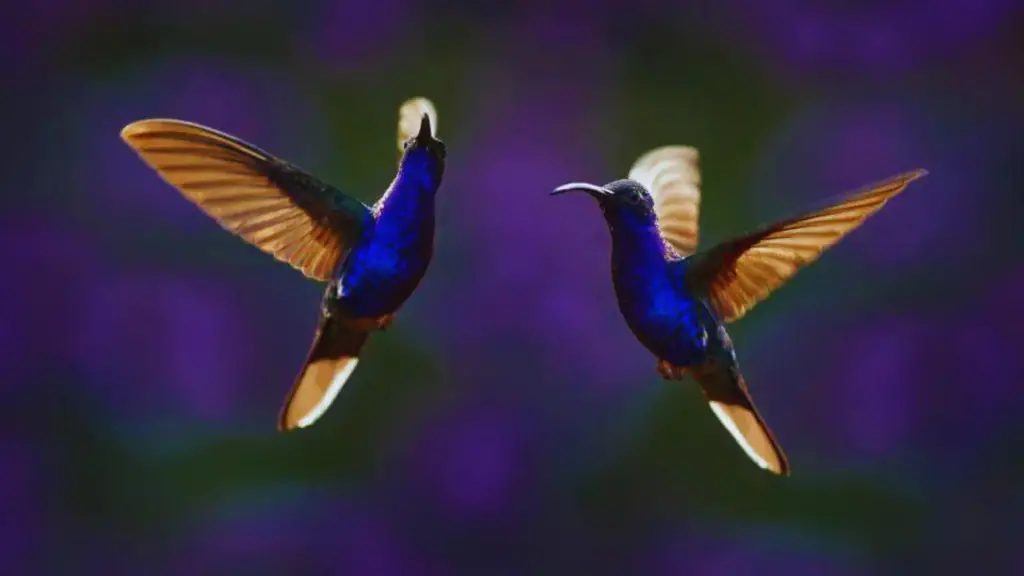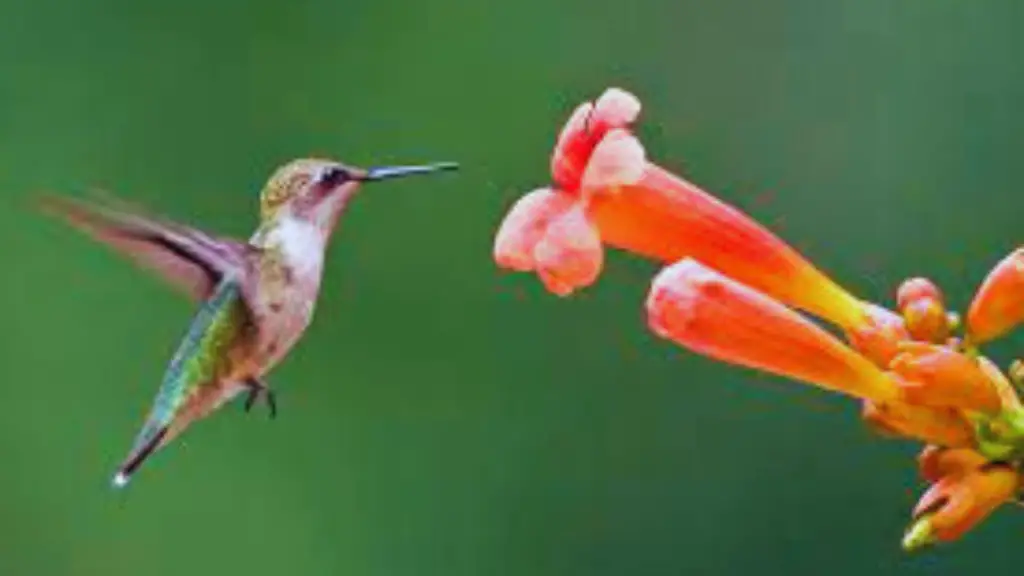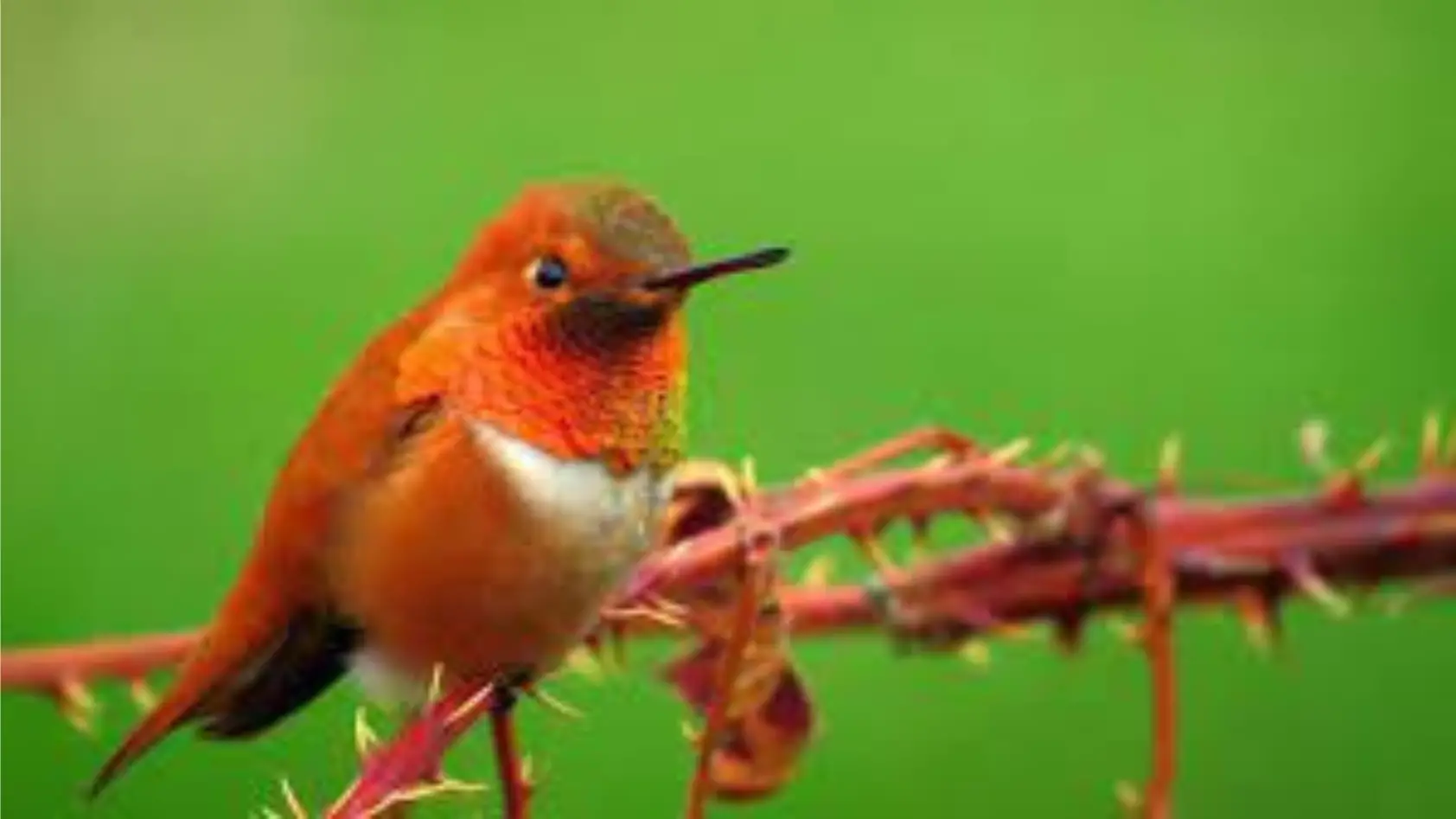Minnesota is known for its diverse bird species and beautiful nature sightings. Among these natural wonders are the vibrant and enchanting hummingbirds. These tiny birds are a joy to watch and are a significant part of Minnesota’s wildlife.
In this article, we will explore the world of Minnesota hummingbirds, their behavior, migration routes, and conservation efforts in place to protect them. We will also provide tips on hummingbird watching and photography in Minnesota, as well as showcase some of the top birding hotspots in the state.
Key Takeaways
- Minnesota is home to a diverse range of bird species, including the enchanting hummingbirds.
- Hummingbirds have unique characteristics and can be found in rare species in Minnesota.
- Hummingbird watching is a popular activity in Minnesota, with specific tips and techniques to observe these tiny creatures.
- Efforts are in place to conserve the delicate and beautiful Minnesota hummingbirds and their habitats.
- Minnesota’s birding hotspots offer an unforgettable birdwatching experience in beautiful nature reserves and parks.
The Enchanting World of Minnesota Hummingbirds
Minnesota is home to some of the most vibrant and enchanting hummingbirds in the world. These tiny creatures, known for their rapid wingbeats and iridescent feathers, are a favorite among birdwatchers and nature enthusiasts. With over 300 bird species in the state, Minnesota is a prime location for hummingbird sightings.
One of the rare hummingbird species found in Minnesota is the Rufous Hummingbird, which migrates from Mexico to Alaska every year. This bird is known for its copper-colored feathers and feisty behavior, making it a fascinating sight for birdwatchers.
The Fascinating Characteristics of Minnesota Hummingbirds
Minnesota hummingbirds have unique characteristics that set them apart from other bird species. For example, their wings can beat up to 200 times per second, allowing them to fly in any direction, including backwards and upside down. Additionally, their metabolism allows them to eat up to three times their body weight in nectar each day, making them an important pollinator for flowers and plants.
Minnesota’s nature is full of enchanting hummingbirds, which is why many birdwatchers flock to the state to catch a glimpse of these tiny birds.
Hummingbird Watching in Minnesota

If you’re interested in watching hummingbirds in Minnesota, there are several locations and techniques that can greatly enhance your experience.
The best time to observe hummingbirds in Minnesota is during their migration season, from late April to early October. They can be found in a variety of habitats, including woodlands, prairies, and gardens.
One popular location for hummingbird watching in Minnesota is the Minnesota Valley National Wildlife Refuge, which is home to a variety of bird species and offers several trails for hiking and birdwatching.
You can also attract hummingbirds to your own backyard by installing feeders filled with a sugar-water solution. Make sure to clean the feeders regularly to prevent the growth of harmful bacteria.
When watching hummingbirds, it’s important to stay quiet and still to avoid disturbing them. Additionally, avoid wearing bright colors or using strong scents, as these can also disrupt their natural behavior.
Overall, hummingbird watching in Minnesota can be a rewarding and peaceful experience, allowing you to witness the beauty of these tiny creatures up close.
Hummingbird Migration Routes in Minnesota
Hummingbirds are known for their remarkable migration patterns, traveling thousands of miles each year. These tiny birds also frequent the state of Minnesota, with many species observed during their annual migration. Understanding the migration routes of hummingbirds in Minnesota is crucial to their conservation and protection.
Hummingbirds in Minnesota follow two primary migration routes, the Eastern and Western routes. The Eastern route brings hummingbirds from the Gulf of Mexico up along the eastern seaboard and over to Minnesota, while the Western route brings them up through the Rockies and over to the state.
Factors such as weather patterns, food availability, and habitat conditions can impact the timing and direction of hummingbird migration. Migration typically begins in late summer and continues through the fall, with peak activity occurring in early September.
Hummingbird enthusiasts in Minnesota can contribute to the conservation efforts of these birds by providing food sources and shelter during their migration. Installing hummingbird feeders in yards and gardens, planting nectar-rich flowers, and providing water sources can all help attract and support hummingbirds as they make their journey through Minnesota.
Remember to always respect and observe hummingbirds from a distance, avoiding any disruptive behavior that could harm or disturb these delicate creatures. By understanding and protecting the hummingbird migration routes in Minnesota, we can help ensure the survival of these beautiful birds and their vital role in our ecosystem.
Attracting Hummingbirds in Minnesota
If you’re a nature lover in Minnesota, attracting hummingbirds to your garden is a great way to enjoy their beauty up close. Here are some tips and techniques to attract these tiny birds to your backyard:
- Plant nectar-rich flowers: Hummingbirds are attracted to bright, tubular flowers that produce lots of nectar. Some great options for your garden include bee balm, cardinal flower, and columbine.
- Hang hummingbird feeders: Fill them with a solution of four parts water to one part white sugar. Avoid adding red food coloring or honey, as they can be harmful to the birds.
- Provide perches: Hummingbirds need perches to rest and conserve their energy. Position small branches near your feeders or plant tall grasses.
- Create a water source: Hummingbirds need to bathe and drink water. A simple bird bath or a mister can help attract them to your garden.
By providing a welcoming environment for hummingbirds, you’ll not only get to enjoy their vibrant colors and unique behaviors but also contribute to their conservation efforts in Minnesota.
Minnesota’s Hummingbird Species
Minnesota is home to several species of hummingbirds, each with its unique characteristics and distribution. The most commonly sighted hummingbird in Minnesota is the Ruby-throated Hummingbird, which is known for its brilliant red throat and emerald green feathers. However, there are also other species of hummingbirds found in the state, including:
| Species | Appearance | Distribution |
|---|---|---|
| Black-chinned Hummingbird | Male has a black, shimmering throat, while the female has a green crown and white throat. | Rare visitor to Minnesota, mostly seen in the southwestern part of the state. |
| Rufous Hummingbird | Males have a rusty orange-red throat, while the females have a green crown and a rusty-red spot in the center of their throats. | Rare visitor to Minnesota, mostly seen in the southern and western parts of the state. |
| Calliope Hummingbird | Males have a bright pinkish-red throat and a green crown, while females have a light-colored throat with green spots and a green crown. | Rare visitor to Minnesota, mostly seen in the southeastern part of the state. |
While these rare hummingbird species are not commonly found in Minnesota, they are still a treat for enthusiastic birders who happen to spot one of them during their migration.
Minnesota Hummingbird Behavior
Minnesota hummingbirds are captivating creatures known for their unique behaviors and habits. If you’re lucky enough to spot one of these birds, you may be amazed at their agility and energy.
Hummingbirds are known for their rapid wing beats, which can reach up to 80 beats per second. They hover mid-air while feeding on nectar from flowers and feeders. You may also spot them catching insects in mid-air or perching on a branch.
During the breeding season, male hummingbirds perform spectacular aerial displays to attract females. They fly in a U-shaped pattern, diving and ascending with amazing speed and precision. Once a female is attracted, they perform a courtship dance, circling each other in the air.
Hummingbirds are also known for their unique nesting habits. Females build nests using spider webs and plant fibers, creating a small, cup-shaped structure. They often build their nests on a sturdy branch or twig and line the inside with soft materials like moss and feathers.
If you’re observing hummingbirds in Minnesota, you may also notice their interactions with other bird species. Hummingbirds are territorial and will defend their feeding and nesting areas from other birds, including larger species. However, they may also share feeding spots with smaller birds like warblers and finches.
Overall, Minnesota hummingbirds are fascinating creatures with a unique set of behaviors and habits. By learning about their behavior, you can gain a greater appreciation for these tiny, energetic birds.
Minnesota Hummingbird Conservation Efforts

Minnesota hummingbirds face numerous challenges, including habitat loss, climate change, and pesticide use. However, there are several conservation efforts in place to protect these beautiful birds and their habitats.
Organizations such as the Audubon Society and the Minnesota Department of Natural Resources work to monitor and protect hummingbird populations in the state. They conduct research on hummingbird behavior and migration patterns, and educate the public on how to attract and care for these birds in their own backyard.
Individuals can also contribute to hummingbird conservation by planting native flowers, providing clean feeders free of pesticides and mold, and reducing their use of harmful chemicals in their yard.
Efforts to protect Minnesota hummingbirds extend to their migration routes and wintering habitats as well. Organizations such as Hawk Ridge Bird Observatory and HawkWatch International track hummingbird migration patterns and work to protect their wintering habitats in Central and South America.
It’s essential that we continue to support these conservation efforts to ensure that Minnesota’s hummingbirds continue to thrive and enchant us with their vibrant colors and acrobatics.
Minnesota Hummingbird Watching Etiquette
Observing Minnesota hummingbirds in their natural habitats can be a thrilling and rewarding experience. However, it’s essential to follow ethical birdwatching practices to avoid disturbing these delicate creatures and their ecosystems.
Here are some guidelines to keep in mind when hummingbird watching in Minnesota:
- Approach hummingbirds slowly and cautiously, keeping a safe distance of at least 10 feet away to avoid startling them.
- Avoid overcrowding hummingbirds and their preferred feeding stations. Only a few people should be present around a feeder or garden at a time.
- Do not use flash photography to capture hummingbirds as it can disorient and harm them.
- Do not disturb the nests and habitats of hummingbirds in Minnesota. Some species are endangered, and disturbing their nests can cause stress and impact their reproduction and survival.
- Avoid wearing brightly colored clothing, hats, or jewelry as hummingbirds may mistake them for flowers and become confused.
- Respect the privacy and rights of private property owners where hummingbirds are present.
Remember that the well-being of these tiny creatures is the top priority, and it is our responsibility to protect them and their ecosystems.
By following these hummingbird watching etiquette guidelines, you can have a memorable and respectful experience while contributing to the conservation of Minnesota’s hummingbird species.
Minnesota Hummingbird Photography Tips
Capturing stunning photographs of Minnesota hummingbirds can be a challenging but rewarding experience. Here are some tips to help you take amazing photos:
- Use a camera with a fast shutter speed to freeze the hummingbird’s wings in motion.
- Set your camera to aperture priority mode and use a wide aperture to create a shallow depth of field, separating the hummingbird from the background.
- Position yourself at a comfortable distance from the hummingbirds to avoid disturbing them, and use a telephoto lens to zoom in on them.
- Look for natural perches, such as branches or flowers, where the hummingbirds may rest.
- Be patient and observe the hummingbirds’ behavior to anticipate their movements and capture them in action.
- Consider using a flash or reflector to add light and highlight the hummingbird’s colors in low-light conditions.
- Experiment with different angles and perspectives to create dynamic and interesting compositions.
Remember to always prioritize the well-being of the hummingbirds above getting the perfect shot. Respect their space and avoid disrupting their natural behavior.
Minnesota Hummingbird Festivals and Events
If you’re a hummingbird enthusiast, you won’t want to miss the hummingbird festivals and events happening throughout Minnesota. These events celebrate the beauty and diversity of these fascinating birds and offer a chance to learn more about their behaviors and conservation efforts.
One of the most popular events is the World of Hummingbirds Festival held in Lanesboro, Minnesota. This festival features guest speakers, live demonstrations, and guided walks to observe hummingbirds in their natural habitats.
| Festival/Event | Date | Location |
|---|---|---|
| The Annual Hummingbird Migration Festival | August 17-18, 2022 | Lake City, MN |
| The Annual Minnesota State Fair | August 26- September 6, 2022 | St. Paul, MN |
| The World of Hummingbirds Festival | September 10-12, 2022 | Lanesboro, MN |
Another exciting event is the Annual Hummingbird Migration Festival in Lake City, Minnesota. This two-day festival features live music, food vendors, and educational booths about hummingbirds.
If you’re in the Twin Cities area, make sure to check out the hummingbird exhibit at the Minnesota State Fair. This exhibit showcases various species of hummingbirds and their behaviors, providing an up-close look at these vibrant creatures.
Attending these events not only allows you to see these stunning birds up close, but it also supports the important conservation efforts to protect Minnesota’s hummingbirds.
Minnesota’s Birding Hotspots
Minnesota is home to a vast range of bird species, making it a popular destination for birding enthusiasts. Here are some of the top birding hotspots in Minnesota:
| Location | Species to Observe | Best Time to Visit |
|---|---|---|
| Sax-Zim Bog | Spruce Grouse, Boreal Chickadee, Great Gray Owl | Winter |
| Duluth Lakewalk | Bald Eagle, Peregrine Falcon, Common Loon | Spring and Fall |
| Minnesota Valley National Wildlife Refuge | Trumpeter Swan, Eastern Bluebird, Red-headed Woodpecker | Spring and Fall |
| Big Bog State Recreation Area | Black-backed Woodpecker, Connecticut Warbler, Yellow Rail | Summer |
Other notable birding spots in Minnesota include the North Shore, the Boundary Waters Canoe Area Wilderness, and the Minnesota River Valley. Whether you’re a seasoned birder or a curious beginner, these locations offer a chance to observe and appreciate the state’s diverse bird species in their natural habitats.
Conclusion
Minnesota hummingbirds are nature’s vibrant gems, adding color and liveliness to the state’s wildlife. By exploring the enchanting world of Minnesota hummingbirds, you can discover unique species and observe their behavior and migration patterns.
Hummingbird watching in Minnesota can be a thrilling and rewarding experience, but it’s important to practice ethical birdwatching and conservation efforts. Attracting hummingbirds to your garden through the use of appropriate flowers, feeders, and habitats can also contribute to their preservation.
While there are challenges to the conservation of Minnesota hummingbirds and their habitats, there are also many organizations and individuals dedicated to their protection. By attending hummingbird festivals and events and visiting birding hotspots in the state, you can further your appreciation and conservation efforts for these beautiful birds.
Remember to always follow hummingbird watching etiquette and be respectful of these delicate creatures. With the knowledge and appreciation gained from exploring Minnesota hummingbirds, you can contribute to their preservation and ensure their place in the state’s vibrant wildlife for generations to come.
FAQs About Minnesota Hummingbirds
Q: What are Minnesota hummingbirds?
A: Minnesota hummingbirds are a diverse group of bird species found in the state of Minnesota. They are known for their vibrant colors and unique characteristics.
Q: How many species of hummingbirds can be found in Minnesota?
A: While Minnesota is not known for a large number of hummingbird species, a few rare species can be spotted in the state, including the Ruby-throated Hummingbird and the Rufous Hummingbird.
Q: Where are the best locations for hummingbird watching in Minnesota?
A: Some popular spots for hummingbird watching in Minnesota include parks, gardens, and nature reserves. It is recommended to visit areas with a variety of flowering plants and feeders.
Q: When is the best time to observe hummingbirds in Minnesota?
A: The best time to observe hummingbirds in Minnesota is during the summer months when they are most active and feeding on nectar-rich flowers.
Q: How can I attract hummingbirds to my garden in Minnesota?
A: To attract hummingbirds to your garden in Minnesota, you can plant native flowering plants that produce nectar, use hummingbird feeders filled with sugar water, and provide suitable habitat with trees and shrubs for nesting.
Q: What are the different species of hummingbirds found in Minnesota?
A: Some of the hummingbird species found in Minnesota include the Ruby-throated Hummingbird, Rufous Hummingbird, and the occasional sighting of other rare species.
Q: What are some behaviors of Minnesota hummingbirds?
A: Minnesota hummingbirds exhibit various behaviors such as feeding on nectar, hovering in mid-air, mating displays, and building intricate nests.
Q: What efforts are being made to conserve Minnesota hummingbirds?
A: Several organizations, researchers, and individuals are involved in conservation efforts to protect Minnesota hummingbirds and their habitats. These efforts include habitat preservation, research, and educational programs.
Q: What is the etiquette for hummingbird watching in Minnesota?
A: It is important to practice ethical birdwatching by keeping a respectful distance, avoiding disturbance to nesting areas, and not interfering with hummingbird behavior or natural habitats.
Q: Any tips for photographing hummingbirds in Minnesota?
A: To capture stunning photographs of hummingbirds in Minnesota, it is recommended to use a fast shutter speed, focus on the bird’s eyes, and be patient while waiting for the perfect shot.
Q: Are there any hummingbird festivals or events in Minnesota?
A: Yes, Minnesota hosts various hummingbird festivals and events that celebrate these beautiful birds and raise awareness about their conservation. These events often include educational activities, birdwatching tours, and lectures.
Q: What are some birding hotspots in Minnesota?
A: Minnesota is home to several birding hotspots, including parks and nature reserves known for their diverse bird species. Some popular locations include the Sax-Zim Bog, Lake Itasca State Park, and the Duluth Harbor.













